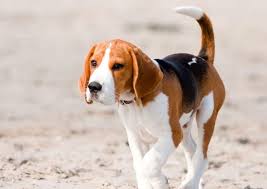
Buckhound
Conditions of detention
Historically, Buckhounds were kept in kennels with ample space to exercise and were accustomed to living in packs. If they were still around today, they would likely thrive in rural settings with plenty of room to roam.
Useful Fact: Buckhounds required extensive exercise and would not have adapted well to apartment living.
Nutrition and diet
As active hunting dogs, Buckhounds would have needed a high-protein diet to maintain their energy levels and stamina. Their diet would have included a mix of meat and grains, tailored to their high activity levels.
Useful Fact: Modern working dogs with similar activity levels require diets rich in protein and fats to support their energy needs.
Health
Buckhounds, like many historical breeds, may have been prone to common canine health issues such as hip dysplasia and ear infections. Regular exercise and a balanced diet would have been crucial to maintaining their health.
Useful Fact: Regular veterinary care and preventive measures, such as ear cleaning and joint supplements, are essential for maintaining the health of active breeds.
Grooming and care
Buckhounds would have had a short to medium-length coat that required regular grooming to keep it in good condition. This would involve brushing to remove loose hair and occasional baths.
Useful Fact: Regular grooming helps maintain the health and cleanliness of a dog’s coat and can prevent issues such as matting and skin infections.
Education and training
Buckhounds were highly trainable and eager to please, making them excellent hunting companions. They would have responded well to positive reinforcement techniques and consistent training from a young age.
Useful Fact: Early socialization and training are crucial for developing well-behaved and obedient dogs, particularly in working breeds.
Toys and entertainment
As hunting dogs, Buckhounds would have enjoyed activities that stimulated their natural instincts, such as tracking and fetching. Interactive toys that challenge their intelligence and keep them physically active would have been ideal.
Useful Fact: Regular playtime and interactive toys can help prevent boredom and destructive behaviors in active breeds.
Safety
Safety considerations for Buckhounds would have included secure fencing to prevent them from wandering and supervision during outdoor activities, especially in areas with wildlife.
Useful Fact: Due to their strong prey drive, it would have been important to keep Buckhounds on a leash when outside of a securely fenced area.
Accessories
Essential accessories for Buckhounds would have included sturdy collars and leashes, harnesses for walks, and grooming tools like brushes and nail clippers.
Useful Fact: A harness can be especially useful for active dogs, as it helps prevent strain on their necks during walks.
Socialization
Early and consistent socialization would have been important for Buckhounds to ensure they developed into well-rounded adults. Exposure to different people, environments, and other animals would have helped them become more adaptable.
Useful Fact: Well-socialized dogs tend to be confident and friendly, making them great companions in various settings.
Travel and Transportation
Buckhounds would have been good travel companions if properly trained and accustomed to travel from a young age. They should have been secured in a vehicle using a seatbelt harness or a crate and had regular breaks during long journeys.
Useful Fact: Ensuring your dog is comfortable with travel can make vacations and trips to the vet much less stressful.
Behavior and psychology
Buckhounds were known for their friendly, energetic, and affectionate nature. They formed strong bonds with their families and enjoyed being part of household activities. However, they could be protective and wary of strangers.
Useful Fact: Regular mental and physical stimulation helps prevent boredom and the development of unwanted behaviors in active breeds.
Legal aspects
Owners would have needed to be aware of local regulations regarding dog ownership, including licensing, leash laws, and any breed-specific legislation that may apply.
Useful Fact: Responsible ownership includes ensuring that your dog is properly identified with tags and a microchip, which can be crucial in case they ever get lost.


